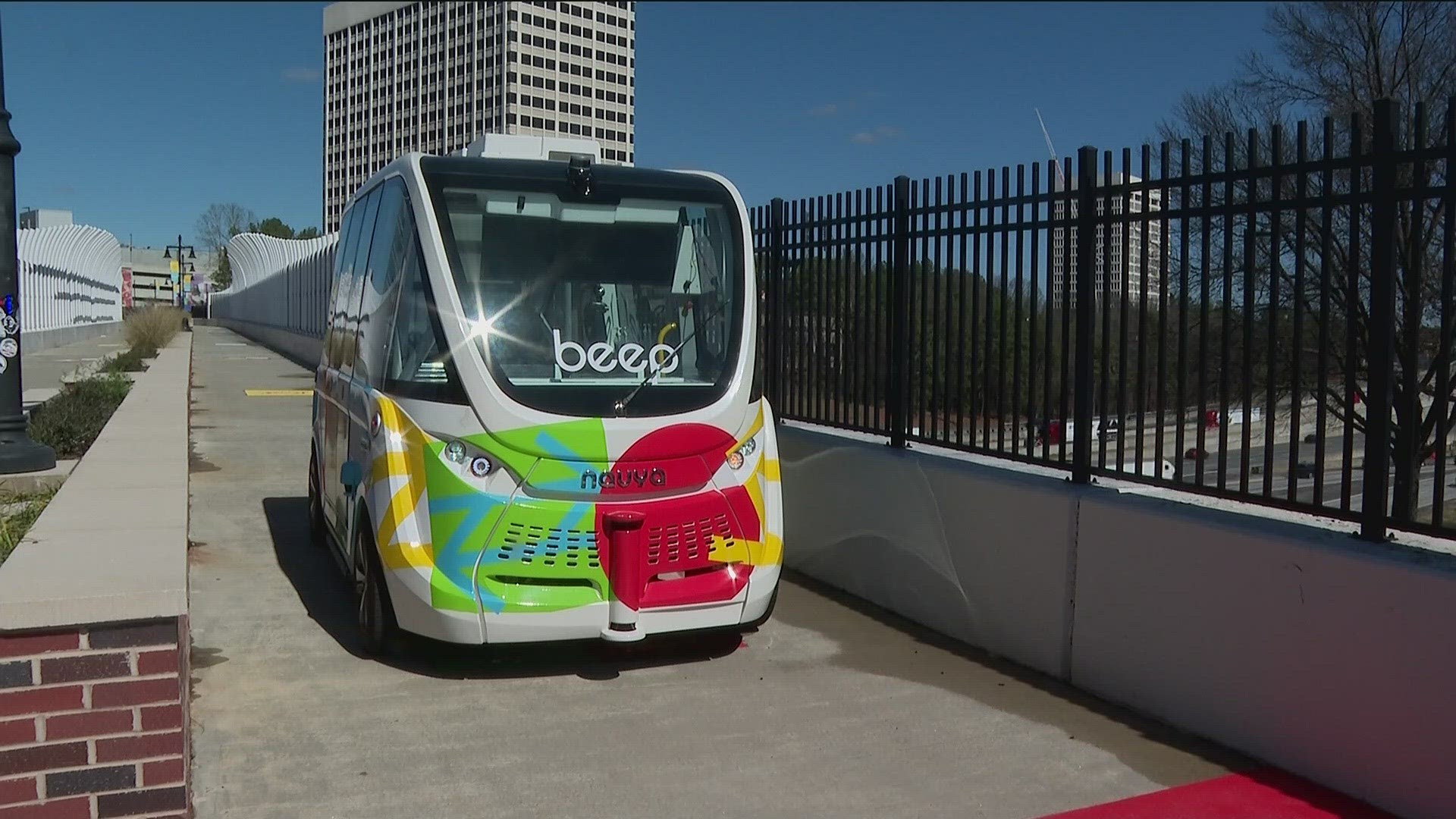COBB COUNTY, Ga. — Brianna Brathwaite and 70 of her Sprayberry High School classmates got a lesson Thursday that went beyond the wheel in terms of Science, Technology, Engineering and Math.
Brathwaite hopped on The Hopper, Cobb County's first autonomous vehicle for public transit. The vehicle follows two routes in the Cumberland area: one to the Galleria Office Park and another to The Battery Atlanta.
"We could sit and have a conversation with each other and not just face forward," Brathwaite said. "I thought we would move faster, but the fact we went slow made me feel more secure, and I wasn't afraid the whole time. I actually felt safe in it."
Kim Menefee, executive director of the Cumberland Community Improvement District, said the pilot program is part of a large project called the Cumberland Sweep. It will ultimately link three miles of walking and biking trails together with an autonomous shuttle system, uniting parts of Cobb County with major attractions like the Cobb Energy Center and national park land. Menefee said the plan was to collect data from the Hopper and begin in earnest on the Cumberland Sweep in 2027.
"The Cumberland Community Improvement District has been in place for 36 years, and we’ve invested $160 million with our partners to improve the transportation and infrastructure within the district," Menefee said. "We’ve had 4,400 riders over this eight-month period telling us that they feel safe and they’d like to see more autonomous mobility within the district.”
Racquel Asa works with Beep, a Florida-based company that rolled out the all-electric vehicle. Asa said the Hopper follows a virtual track programmed by operators and can reach speeds of over 12 miles per hour.
"It has lighters and sensors, which basically work like the eyes of the vehicle," Asa said. "Some of us have better eyes than others. I can tell you these eyes don't blink, and the vehicle technology doesn't get distracted."
Asa said, the hope is that students like Brathwaite will learn about self-driving vehicles and test out a ride, which could lead them to a career path in STEM.
"Having them have early exposure to these types of new and alternative transportation and additive technology gives them a little taste of what they can do when they grow up," Asa said. “Eighty to 90 students here today, and that’s 80 to 90 more students that could potentially work in this field.”

